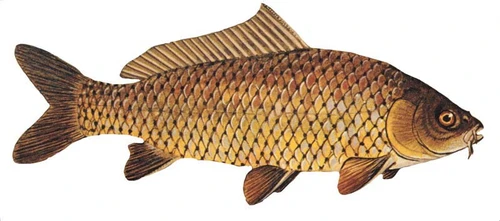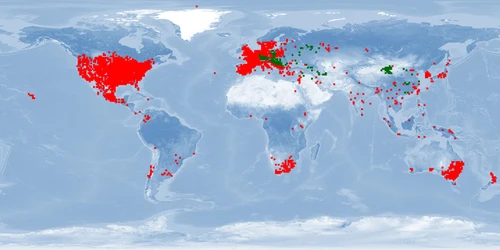Information
Author: Jenny Volstorf
Version: B | 1.1Published: 2022-01-22
1 Remarks
1.1 General remarks
Escapees and consequences: negative or at most unpredictable for the local ecosystem1.2 Other remarks
No data found yet.2 Ethograms
In the farm or lab: on feeding, daily rhythm, reproduction, cognitive abilities, coping styles, stress reactions
3 Distribution
Natural distribution: Danube river
Introduced: Africa, Australia, Europe, New Zealand, North America
4 Natural co-existence
5 Substrate and/or shelter
5.1 Substrate
Substrate range, substrate preference: opportunistic – reported from areas with plants as well as reservoirs with gravel und lakes with sandy bottom5.2 Shelter or cover
Shelter or cover preference: vegetation (further research needed)6 Food, foraging, hunting, feeding
6.1 Trophic level and general considerations on food needs
Trophic level: 3.1Impacts of feed fishery: contributes to overfishing, challenges animal welfare
6.2 Food items
Food items, food preference: omnivorous; increasing prey size with increasing ageFeed enrichment and stress tolerance: direct effect of fructo-oligosaccharide (further research needed)
6.3 Feeding behaviour
Feeding style, foraging mode: depending on diet either bottom grazing or feeding in water columnFeed delivery and stress: self-feeding decreases stress (further research needed)
Feed delivery and growth: self-feeding increases growth (further reseach needed)
Effects on feeding: direct relation with temperature
For feeding and...
...taste → D3,
...shyness-boldness continuum → D4,
...exploration-avoidance continuum → D5,
...confinement → D6.
7 Photoperiod
7.1 Daily rhythm
Daily rhythm: mainly nocturnal, differences between individuals and seasons7.2 Light intensity
Light intensity and stress: inverse relation (further research needed)Light intensity and growth: direct relation (further research needed)
7.3 Light colour
No data found yet.8 Water parameters
8.1 Water temperature
Standard temperature range, temperature preference: range 0.1-33 °C, unclear preferenceTemperature and stress: increasing vulnerability >23 °C, decreasing survival with increasing immediate temperature change (further research needed)
Temperature and growth: optimally 20-28 °C (further research needed)
8.2 Oxygen
No data found yet.8.3 Salinity
Salinity tolerance, standard salinity range: probably euryhaline, 0.8-4 ppt (further research needed)8.4 pH
No data found yet.8.5 Turbidity
Standard turbidity range: oligo- to eutrophic lakes, Secchi depth 5-49 cm (further research needed)8.6 Water hardness
No data found yet.8.7 NO4
No data found yet.8.8 Other
No data found yet.9 Swimming
9.1 Swimming type, swimming mode
No data found yet.9.2 Swimming speed
No data found yet.9.3 Home range
Home range: 10-70 m, up to 600 m in rivers, 0.003-10.6 km in reservoir, site fidelity but also shifts of home ranges (further research needed)9.4 Depth
Depth range, depth preference: 0-25 m, moves deeper in winter (further research needed)9.5 Migration
Migration type: potamodromous10 Growth
10.1 Ontogenetic development
Mature egg: 36-113 h from fertilisation until hatching, 0.3-2.5 mmLarvae: hatching to 4-12 days, 3.9-12 mm
Fry: beginning of exogenous feeding, 1-45 days, 6.4-16 mm, 0.6-3.2 g (further research needed)
Juveniles, sexual maturity: fully developed (ca 31 days) to beginning of maturity (2-3+ years), 16-330 mm, 3.7-490 g
Adults: 2-15 years, 22.9-79 cm, 0.3-7.5 kg
10.2 Sexual conversion
No data found yet.10.3 Sex ratio
Natural male:female ratio: 1:1-1:1.2; 1:1-1.4:110.4 Effects on growth
Growth rate: 85-104 mm fork length/year in first three years, 47-72 mm fork length/year in fourth and fifth year, 39-40 mm fork length/year in sixth-eighth yearGrowth and sex: either no difference or bimodal pattern, noticeable from 6 years on (further research needed)
Growth and other factors: direct effect of 40-60 polyculture with Oreochromis aureus; direct effect of music but depending on type of music and more pronounced under 200 than 80 lux; direct effect of domestication (further research needed)
For growth and...
...feed delivery → D16,
...light intensity → D17,
...water temperature → D18,
...tank colour → D19,
...stocking density → D20.
10.5 Deformities and malformations
Deformities and malformations: head and body abnormalities in 24.9% of individuals (further research needed)Hypotheses regarding causes for deformities: magnesium <0.02 mmol/L during incubation, probably little effect of temperature within optimal range (further research needed)
11 Reproduction
11.1 Nest building
Nest building: none11.2 Attraction, courtship, mating
Courtship sequence: male follows female, slightly touches her (further research needed)11.3 Spawning
Spawning conditions: submerged vegetation, spring-summer to all year, morning-midday, average 15-25 °C, fresh water, at surface or up to 1.7 m, in aggregationsSpawning sequence: male and female support each other with pectoral fins, splash caudal fins, release eggs and sperm in water (further research needed)
Effects on spawning: direct effect of in-season versus out-of-season spawning (further research needed)
11.4 Fecundity
Female fecundity: range 1,633-1,540,000 eggs/female, range 19,300-310,864 eggs/kg (further research)Effects on fecundity: direct effect of age of spawners (further research needed)
11.5 Brood care, breeding
Breeding type: lake spawner12 Senses
12.1 Vision
Tank colour and stress: higher stress in red and black tanks (further research needed)Tank colour and growth: worst food conversion ratio in red tanks (further research needed)
12.2 Olfaction (and taste, if present)
Olfactory spectrum (and gustatory, if present): sour, bitter, amino acids, individual differences in preferences (further research needed)12.3 Hearing
Hearing type, hearing spectrum: hearing specialist, 0.3-1 kHz, better hearing at 25 °C compared to 15 °C (further research needed)Importance of hearing: categorisation (further research needed)
Noise and stress: sensitive to fluctuating noise (in amplitude and frequency) and noise rapidly increasing to maximum sound pressure level (further research needed)
For music and growth → D22.
12.4 Touch, mechanical sensing
No data found yet.12.5 Lateral line
No data found yet.12.6 Electrical sensing
No data found yet.12.7 Nociception, pain sensing
Nociception spectrum: fibres to conduct sharp acute as well as dull pain; anomalous behaviour after low concentrations of acid, individual differences (further research needed)Pain and treatment: analgesic before operation decreases reactions shown otherwise (further research needed)
12.8 Other
No data found yet.13 Communication
13.1 Visual
Colouration and habitat: align with black or white tanks (further research needed)13.2 Chemical
No data found yet.13.3 Acoustic
No data found yet.13.4 Mechanical
No data found yet.13.5 Electrical
No data found yet.13.6 Other
No data found yet.14 Social behaviour
14.1 Spatial organisation
Aggregation type: aggregations, adults also solitary (further research needed)Stocking density in the wild: spawning aggregation in schools (further research needed)
Stocking density and stress: direct relation from 57-114 kg/m3 or 1.6 ind/L on (further research needed)
Stocking density and growth: inverse relation from ca 64 kg/m3 or 0.4 ind/L on (further research needed)
14.2 Social organisation
No data found yet.14.3 Exploitation
No data found yet.14.4 Facilitation
No data found yet.14.5 Aggression
For aggression (or lack thereof) and......food items → D2,
...exploration-avoidance continuum → D5.
14.6 Territoriality
No data found yet.15 Cognitive abilities
15.1 Learning
Operant or instrumental conditioning: may be used for managing self-feeder or other cognitive tasks15.2 Memory
Memory: fast learning and spatial memory (further research needed)15.3 Problem solving, creativity, planning, intelligence
No data found yet.15.4 Other
No data found yet.16 Personality, coping styles
Exploration-avoidance continuum: relationship with competitive behaviour, effect on reinforcement learning (further research needed)
Activity continuum: relationship with shelter use, body depth (further research needed)
Sociability continuum: shoaling tendency
17 Emotion-like states
17.1 Joy
No data found yet.17.2 Relaxation
No data found yet.17.3 Sadness
No data found yet.17.4 Fear
Fear: strongly stressed when isolated (further research needed)18 Self-concept, self-recognition
19 Reactions to husbandry
19.1 Stereotypical and vacuum activities
No data found yet.19.2 Acute stress
Handling: less stressful with anaesthetic (further research needed)Confinement: stressful from 30 min on (further research needed)
Live transport: stressful
For acute stress...
...water temperature → D27,
...noise → D28,
...and pain → D29,
...stunning → D30.
19.3 Chronic stress
Effects on welfare: polyculture is beneficial (further research needed)For chronic stress and...
...feed enrichment → D31,
...feed delivery → D24,
...light intensity → D32,
...tank colour → D33,
...noise → D28,
...stocking density → D26,
...coping styles → D5.
19.4 Stunning reactions
Stunning rules: fast, effective, safeStunning methods: clove oil and electrical plus percussive stunning most effective (further research needed)
Stunning methods and stress: electrical or percussive stunning or combination of the two least stressful
Glossary
ADULTS = mature individuals
EXPLORATION-AVOIDANCE = reaction to new situations, e.g. new habitat, new food, novel objects. Referred to as neophobia/neophilia elsewhere. Tests: open field, trappability for first time, novel environment, hole board (time spent with head in holes), novel object 77.
FARM = setting in farming environment or under conditions simulating farming environment in terms of size of facility or number of individuals
FOOD CONVERSION RATIO = (food offered / weight gained)
FRY = larvae from external feeding on
IND = individuals
JUVENILES = fully developed but immature individuals
LAB = setting in laboratory environment
LARVAE = hatching to mouth opening
MILLIARD = 1,000,000,000 47 48
PHOTOPERIOD = duration of daylight
SHYNESS-BOLDNESS = reaction to risky (but not new!) situations, e.g. predators or humans. Referred to as docility, tameness, fearfulness elsewhere. Tests: predator presentation, predator stimulus, threat, trappability (latency to enter a trap for first time can be exploration), resistance to handlers (Trapezov stick test), tonic immobility (catatonic-like death-feigning anti predator response) 77.
SOCIABILITY = reaction towards presence or absence of conspecifics. Test: separation 77.
SPECIALIST = Specialists detect a broad range of sound frequencies (<50 to >1,500 Hz). Low hearing threshold = can detect quieter sounds. Live in quiet environments (deep water, still lakes) 7273.
TOTAL LENGTH = from snout to tip of caudal fin as compared to fork length (which measures from snout to fork of caudal fin) or standard length (from head to base of tail fin) or body length (from the base of the eye notch to the posterior end of the telson) 54
WILD = setting in the wild
Bibliography
2 Miller, S. A., and T. A. Crowl. 2006. Effects of common carp (Cyprinus carpio) on macrophytes and invertebrate communities in a shallow lake. Freshwater Biology 51: 85–94. https://doi.org/10.1111/j.1365-2427.2005.01477.x.
3 Hinojosa-Garro, Demián, and Luis Zambrano. 2004. Interactions of common carp (Cyprinus carpio) with benthic crayfish decapods in shallow ponds. Hydrobiologia 515: 115–122. https://doi.org/10.1023/B:HYDR.0000027323.77213.39.
4 Vilizzi, Lorenzo, and Ali Serhan Tarkan. 2015. Experimental Evidence for the Effects of Common Carp (Cyprinus carpio L., 1758) on Freshwater Ecosystems: A Narrative Review with Management Directions for Turkish Inland Waters. LIMNOFISH-Journal of Limnology and Freshwater Fisheries Research 1: 123–149.
5 Haynes, G. D., J. Gongora, D. M. Gilligan, P. Grewe, C. Moran, and F. W. Nicholas. 2012. Cryptic hybridization and introgression between invasive Cyprinid species Cyprinus carpio and Carassius auratus in Australia: implications for invasive species management. Animal Conservation 15: 83–94. https://doi.org/10.1111/j.1469-1795.2011.00490.x.
6 Vilizzi, Lorenzo. 1998. Observations on ontogenetic shifts in the diet of 0+ carp, Cyprinus carpio, from the River Murray, Australia. Folia Zoologica 47: 225–229.
7 Bajer, Przemyslaw G., Hangkyo Lim, Mario J. Travaline, Brett D. Miller, and Peter W. Sorensen. 2010. Cognitive aspects of food searching behavior in free-ranging wild Common Carp. Environmental Biology of Fishes 88: 295–300. https://doi.org/10.1007/s10641-010-9643-8.
8 NOT FOUND
9 Økland, Finn, Clinton J. Hay, Tor F. Næsje, Eva B. Thorstad, and Nande Nickandor. 2001. Movements and habitat utilisation of radio tagged carp (Cyprinus carpio) in a reservoir in the Fish River, Namibia. NINA NAKU Project Report 013. Trondheim, Norway.
10 Crook, David A. 2004. Is the home range concept compatible with the movements of two species of lowland river fish? Journal of Animal Ecology 73: 353–366. https://doi.org/10.1111/j.0021-8790.2004.00802.x.
11 Penne, Christopher R., and Clay L. Pierce. 2008. Seasonal Distribution, Aggregation, and Habitat Selection of Common Carp in Clear Lake, Iowa. Transactions of the American Fisheries Society 137: 1050–1062. https://doi.org/10.1577/T07-112.1.
12 Richardson, R. E. 1913. Observations on the Breeding of the European Carp in the Vicinity of Havana, Illinois. Illinois Natural History Survey Bulletin 9: 384–405.
13 Rahman, M. M., and C. G. Meyer. 2009. Effects of food type on diel behaviours of common carp Cyprinus carpio in simulated aquaculture pond conditions. Journal of Fish Biology 74: 2269–2278. https://doi.org/10.1111/j.1095-8649.2009.02236.x.
14 Oyugi, D. O., J. Cucherousset, D. J. Baker, and J. R. Britton. 2012. Effects of temperature on the foraging and growth rate of juvenile common carp, Cyprinus carpio. Journal of Thermal Biology 37: 89–94. https://doi.org/10.1016/j.jtherbio.2011.11.005.
15 Klaren, Peter H. M., Stephanie C. M. van Dalen, Wim Atsma, F. A. Tom Spanings, Jasper Hendriks, and Gert Flik. 2013. Voluntary timing of food intake increases weight gain and reduces basal plasma cortisol levels in common carp (Cyprinus carpio L.). Physiology & Behavior 122: 120–128. https://doi.org/10.1016/j.physbeh.2013.08.020.
16 Hoda, S. M. Shamsul, and Hiroshi Tsukahara. 1971. Studies on the development and relative growth in the carp, Cyprinus carpio (Linné). Journal of the Faculty of Aquaculture, Kyushu University 16.
17 Chase, Ava R. 2001. Music discriminations by carp (Cyprinus carpio). Animal Learning & Behavior 29: 336–353. https://doi.org/10.3758/BF03192900.
18 Mesquita, Flavia Oliveira, Fabio Luiz Borcato, and Felicity Ann Huntingford. 2015. Cue-based and algorithmic learning in common carp: A possible link to stress coping style. Behavioural Processes 115: 25–29. https://doi.org/10.1016/j.beproc.2015.02.017.
19 Huntingford, G. Andrew, S. Mackenzie, D. Morera, S. M. Coyle, M. Pilarczyk, and S. Kadri. 2010. Coping strategies in a strongly schooling fish, the common carp Cyprinus carpio. Journal of Fish Biology 76: 1576–1591. https://doi.org/10.1111/j.1095-8649.2010.02582.x.
20 Rebensburg, Philip. 2010. Assessment and evaluation of temperament traits in carp (Cyprinus carpio L.), with contrasts between mirror and scaled morphological phenotypes. Diploma thesis, Berlin: Free University of Berlin.
21 Duan, M., T. Zhang, W. Hu, S. Xie, L. F. Sundström, Z. Li, and Z. Zhu. 2013. Risk-taking behaviour may explain high predation mortality of GH-transgenic common carp Cyprinus carpio. Journal of Fish Biology 83: 1183–1196. https://doi.org/10.1111/jfb.12213.
22 Vrtělová, Jana. 2013. Ontogenetic and morphological effects of personality in common carp (Cyprinus carpio). Master, University of Saskatchewan.
23 Reilly, Siobhan C., John P. Quinn, Andrew R. Cossins, and Lynne U. Sneddon. 2008. Behavioural analysis of a nociceptive event in fish: Comparisons between three species demonstrate specific responses. Applied Animal Behaviour Science 114: 248–259. https://doi.org/10.1016/j.applanim.2008.01.016.
24 Rahmanifarah, K., B. Shabanpour, and A. Sattari. 2011. Effects of Clove Oil on Behavior and Flesh Quality of Common Carp (Cyprinus carpio L.) in Comparison with Pre-slaughter CO2 Stunning, Chilling and Asphyxia. Turkish Journal of Fisheries and Aquatic Sciences 11: 139–147.
25 Baker, Tracie R., Bridget B. Baker, Stephen M. Johnson, and Kurt K. Sladky. 2013. Comparative analgesic efficacy of morphine sulfate and butorphanol tartrate in koi (Cyprinus carpio) undergoing unilateral gonadectomy. Journal of the American Veterinary Medical Association 243: 882–890. https://doi.org/10.2460/javma.243.6.882.
26 Kusku, Halit, Sebahattin Ergun, Sevdan Yilmaz, Betul Guroy, and Murat Yigit. 2018. Impacts of Urban Noise and Musical Stimuli on Growth Performance and Feed Utilization of Koi fish (Cyprinus carpio) in Recirculating Water Conditions. Turkish Journal of Fisheries and Aquatic Sciences 19: 513–523.
27 Retter, Karina, Karl-Heinz Esser, Matthias Lüpke, John Hellmann, Dieter Steinhagen, and Verena Jung-Schroers. 2018. Stunning of common carp: Results from a field and a laboratory study. BMC Veterinary Research 14: 1–11. https://doi.org/10.1186/s12917-018-1530-0.
28 Reviewed distribution maps for Common carp (Cyprinus carpio). 2016. Aquamaps.
29 Balon, Eugene K. 1995. The common carp, Cyprinus carpio: its wild origin, domestication in aquaculture, and selection as colored nishikigoi. Guelph Ichthyology Reviews 3.
30 Hailu, Mathewos. 2013. Reproductive aspects of common carp (Cyprinus carpio L, 1758) in a tropical reservoir (Amerti, Ethiopia). Journal of Ecology and the Natural Environment 5: 260–264. https://doi.org/10.5897/JENE2013.0387.
31 Winker, Henning, Olaf L. F. Weyl, Anthony J. Booth, and Bruce R. Ellender. 2011. Life history and population dynamics of invasive common carp, Cyprinus carpio, within a large turbid African impoundment. Marine and Freshwater Research 62: 1270–1280. https://doi.org/10.1071/MF11054.
32 Sivakumaran, Kathiravelu P., Paul Brown, Daniel Stoessel, and Annie Giles. 2003. Maturation and Reproductive Biology of Female Wild Carp, Cyprinus carpio, in Victoria, Australia. Environmental Biology of Fishes 68: 321–332. https://doi.org/10.1023/A:1027381304091.
33 Vilizzi, Lorenzo, and Keith F. Walker. 1999. Age and growth of the common carp, Cyprinus carpio, in the River Murray, Australia: validation, consistency of age interpretation, and growth models. Environmental Biology of Fishes 54: 77–106. https://doi.org/10.1023/A:1007485307308.
34 Karatas, Mehmet, Erdogan Cicek, Asiye Basusta, and Nuri Basusta. 2007. Age, Growth and Mortality of Common Carp (Cyprinus carpio Linneaus, 1758) Population in Almus Dam Lake (Tokat-Turkey). Journal of Applied Biological Sciences 1: 81–85.
35 Demirkalp, F. Yildiz. 2007. Some of The Growth Characteristics of Carp (Cyprinus carpio L., 1758) in Çernek Lake (Samsun, Turkey). Hacettepe Journal of Biology and Chemistry 35: 57–65.
36 Alp, Ahmet, and Süleyman Balik. 2000. Growth Conditions and Stock Analysis of the Carp (Cyprinus carpio, Linnaeus 1758) Population in Gölhisar Lake. TURKISH JOURNAL OF ZOOLOGY 24: 291–304.
37 Fernández-Delgado, Carlos. 1990. Life history patterns of the common carp, Cyprinus carpio, in the estuary of the Guadalquivir river in south-west Spain. Hydrobiologia 206: 19–28. https://doi.org/10.1007/BF00018966.
38 García-Berthou, Emili. 2001. Size- and depth-dependent variation in habitat and diet of the common carp (Cyprinus carpio). Aquatic Sciences 63: 466–476. https://doi.org/10.1007/s00027-001-8045-6.
39 Demirkalp, F. Yildiz. 2007. Growth Characteristics of Carp (Cyprinus carpio L., 1758) in Liman Lake (Samsun, Turkey). Hacettepe Journal of Biology and Chemistry 35: 1–8.
40 Tempero, Grant W., Nicholas Ling, Brendan J. Hicks, and Matthew W. Osborne. 2006. Age composition, growth, and reproduction of koi carp (Cyprinus carpio) in the lower Waikato region, New Zealand. New Zealand Journal of Marine and Freshwater Research 40: 571–583. https://doi.org/10.1080/00288330.2006.9517446.
41 Coulter, David P., Jeffrey C. Jolley, Kris R. Edwards, and David W. Willis. 2008. Common carp (Cyprinus carpio) population characteristics and recruitment in two Nebraska sandhill lakes. Transactions of the Nebraska Academy of Sciences and Affiliated Societies 31: 35–41.
42 Froese, R., and D. Pauly. 2014. FishBase. World Wide Web electronic publication. www.fishbase.org.
43 FAO. 2014. The State of World Fisheries and Aquaculture 2014. Rome: Food and Agriculture Organization of the United Nations.
44 Watson, R., Jackie Alder, and Daniel Pauly. 2006. Fisheries for forage fish, 1950 to the present. In On the Multiple Uses of Forage Fish: from Ecosystems to Markets, ed. Jackie Alder and Daniel Pauly, 14:1–20. Fisheries Centre Research Reports 3. Vancouver, Canada: Fisheries Centre, University of British Columbia.
45 Mood, A. 2012. Average annual fish capture for species mostly used for fishmeal (2005-2009). fishcount.org.uk.
46 Mood, A., and P. Brooke. 2012. Estimating the Number of Farmed Fish Killed in Global Aquaculture Each Year.
47 Kopf, Von Kristin. 2012. Milliarden vs. Billionen: Große Zahlen. Sprachlog.
48 Weisstein, Eric W. 2018. Milliard. Text. MathWorld - a Wolfram Web resource. http://mathworld.wolfram.com/Milliard.html. Accessed February 2.
49 Hoseinifar, Seyed Hossein, Narges Soleimani, and Einar Ringø. 2014. Effects of dietary fructo-oligosaccharide supplementation on the growth performance, haemato-immunological parameters, gut microbiota and stress resistance of common carp (Cyprinus carpio) fry. British Journal of Nutrition 112: 1296–1302. https://doi.org/10.1017/S0007114514002037.
50 Papoutsoglou, Sofronios E., Nafsika Karakatsouli, Eustratios S. Papoutsoglou, and Georgios Vasilikos. 2010. Common carp (Cyprinus carpio) response to two pieces of music (“Eine Kleine Nachtmusik” and “Romanza”) combined with light intensity, using recirculating water system. Fish Physiology and Biochemistry 36: 539–554. https://doi.org/10.1007/s10695-009-9324-8.
51 Korwin-Kossakowski, M. 2008. The influence of temperature during the embryonic period on larval growth and development in carp, Cyprinus carpio L., and grass carp, Ctenopharyngodon idella (Val.): Theoretical and practical aspects. Archiwum Rybactwa Polskiego 16: 231–314.
52 Snik, G. M. J. van, J. G. M. van den Boogaart, and J. W. M. Osse. 1997. Larval growth patterns in Cyprinus carpio and Clarias gariepinus with attention to the finfold. Journal of Fish Biology 50: 1339–1352. https://doi.org/10.1111/j.1095-8649.1997.tb01657.x.
53 Aliniya, Masoumeh, Hossein Khara, Shahrouz Baradaran Noveiri, and Hadiseh Dadras. 2013. Influence of Age of Common Carp (Cyprinus carpio) Broodstock on Reproductive Traits and Fertilization. Turkish Journal of Fisheries and Aquatic Sciences 13: 19–25.
54 Pawson, M.G., and G.D. Pickett. 1996. The Annual Pattern of Condition and Maturity in Bass, Dicentrarchus Labrax, in Waters Around England and Wales. Journal of the Marine Biological Association of the United Kingdom 76: 107. https://doi.org/10.1017/S0025315400029040.
55 Kucharczyk, Dariusz, Katarzyna Targońska, Piotr Hliwa, Piotr Gomułka, Maciej Kwiatkowski, Sławomir Krejszeff, and Jacek Perkowski. 2008. Reproductive parameters of common carp (Cyprinus carpio L) spawners during natural season and out-of-season spawning. Reproductive Biology 8: 285–289. https://doi.org/10.1016/S1642-431X(12)60018-7.
56 Huang, Wen-Bin, Yu-Chun Lin, and Tai-Sheng Chiu. 2003. Effects of Stocking Density on Growth, Survival, Production, and Size Variation of the Common Carp Cyprinus carpio Linnaeus (1758) Fry within Aquariums. J. Fish. Soc. Taiwan 30: 29–41.
57 Svobodová, Z., P. Kaláb, L. Dusek, B. Vykusová, Jitka KOLÁŘOVÁ, and D. Janousková. 1999. The Effect of Handling and Transport of the Concentration of Glucose and Cortisol in Blood Plasma of Common Carp. Acta Veterinaria Brno 68: 265–274.
58 Kasumyan, A. O., and A. M. Kh. Morsi. 1996. Taste sensitivity of common carp Cyprinus carpio to free amino acids and classical taste substances. Journal of Ichthyology 36: 391–403.
59 Ruane, N. M., E. A. Huisman, and J. Komen. 2001. Plasma cortisol and metabolite level profiles in two isogenic strains of common carp during confinement. Journal of Fish Biology 59: 1–12. https://doi.org/10.1111/j.1095-8649.2001.tb02334.x.
60 Ruane, N M, E C Carballo, and J Komen. 2002. Increased stocking density influences the acute physiological stress response of common carp Cyprinus carpio (L.). Aquaculture Research 33: 777–784. https://doi.org/10.1046/j.1365-2109.2002.00717.x.
61 Ebrahimi, Ghaffar. 2011. Effects of Rearing Tank Background Color on Growth Performance in Juvenile Common Carp, Cyprinus carpio L. Agricultural Journal 6: 213–217.
62 Maiditsch, Isabelle Pia, and Friedrich Ladich. 2014. Effects of Temperature on Auditory Sensitivity in Eurythermal Fishes: Common Carp Cyprinus carpio (Family Cyprinidae) versus Wels Catfish Silurus glanis (Family Siluridae). PLOS ONE 9: e108583. https://doi.org/10.1371/journal.pone.0108583.
63 Daskalova, Aleksandra, Alexander Pavlov, Ralica Kyuchukova, and Hristo Daskalov. 2016. Humane Slaughter of Carp – A Comparison between Three Stunning Procedures. Turkish Journal of Fisheries and Aquatic Sciences 16: 753–758.
64 Dobšíková, R., Z. Svobodová, J. Bláhová, H. Modrá, and J. Velíšek. 2009. The effect of transport on biochemical and haematological indices of common carp (Cyprinus carpio L.). Czech Journal of Animal Science 54: 510–518.
65 Papoutsoglou, S.E., H. Miliou, N.P. Karakatsouli, M. Tzitzinakis, and S. Chadio. 2001. Growth and physiological changes in scaled carp and blue tilapia under behavioral stress in mono- and polyculture rearing using a recirculated water system. Aquaculture International 9: 509–518. https://doi.org/10.1023/A:1020506814609.
66 Al-Harbi, A.H. 2001. Skeletal Deformities in Cultured Common Carp Cyprinus carpio L. Asian Fisheries Science 14: 247–254.
67 Velden, J. A. van der, F. A. Spanings, G. Flik, and S. E. Wendelaar Bonga. 1991. Early life stages of carp (Cyprinus carpio L.) depend on ambient magnesium for their development. Journal of Experimental Biology 158: 431–438.
68 Papoutsoglou, S. E, G Mylonakis, H Miliou, N. P Karakatsouli, and S Chadio. 2000. Effects of background color on growth performances and physiological responses of scaled carp (Cyprinus carpio L.) reared in a closed circulated system. Aquacultural Engineering 22: 309–318. https://doi.org/10.1016/S0144-8609(00)00056-X.
69 Kasumyan, A. O. 2000. Individual Variability of Taste Preferences and of Behavioral Response to Taste Stimuli in Caro Cyprinus carpio. Journal of Ichthyology 40: 661–669.
70 Popper, Arthur N., and Richard R. Fay. 1993. Sound Detection and Processing by Fish: Critical Review and Major Research Questions (Part 1 of 2). Brain, Behavior and Evolution 41: 14–25. https://doi.org/10.1159/000113821.
71 Wysocki, Lidia Eva, John P. Dittami, and Friedrich Ladich. 2006. Ship noise and cortisol secretion in European freshwater fishes. Biological Conservation 128: 501–508. https://doi.org/10.1016/j.biocon.2005.10.020.
72 Brown, Culum. 2015. Fish intelligence, sentience and ethics. Animal Cognition 18: 1–17. https://doi.org/10.1007/s10071-014-0761-0.
73 Amundsen, Lasse, and Martin Landro. 2011. Marine seismic sources part VIII: Fish hear a great deal. Recent Advances in Technology 8: 1–5.
74 Roques, Jonathan A. C., Wout Abbink, Femke Geurds, Hans van de Vis, and Gert Flik. 2010. Tailfin clipping, a painful procedure: Studies on Nile tilapia and common carp. Physiology & Behavior 101: 533–540. https://doi.org/10.1016/j.physbeh.2010.08.001.
75 Ruane, Neil M, and Hans Komen. 2003. Measuring cortisol in the water as an indicator of stress caused by increased loading density in common carp (Cyprinus carpio). Aquaculture 218: 685–693. https://doi.org/10.1016/S0044-8486(02)00422-2.
76 Enache, Ionica, Victor Cristea, Tudor Ionescu, and Sandita Ion. 2011. The influence of stocking density on the growth of common carp, Cyprinus carpio, in a recirculating aquaculture system. Aquaculture, Aquarium, Conservation & Legislation 4: 146–153.
77 Réale, Denis, Simon M. Reader, Daniel Sol, Peter T. McDougall, and Niels J. Dingemanse. 2007. Integrating animal temperament within ecology and evolution. Biological Reviews 82: 291–318. https://doi.org/10.1111/j.1469-185X.2007.00010.x.
78 Ruane, N. M, E. A Huisman, and J Komen. 2002. The influence of feeding history on the acute stress response of common carp (Cyprinus carpio). Aquaculture 210: 245–257. https://doi.org/10.1016/S0044-8486(01)00819-5.
79 Varga, Dániel, András Szabó, Csaba Hanc, Zsigmond Jeney, László Ardó, Marcell Molnár, and Tamás Molnár. 2014. Impact of Handling and Pre-Mortal Stress on the Flesh Quality of Common Carp (Cyprinus carpio L.). The Israeli Journal of Aquaculture - Bamidgeh 66: 1–6.
80 Robb, D H F, and S C Kestin. 2002. Methods Used to Kill Fish: Field Observations and Literature Reviewed. Animal Welfare 11: 269–282.
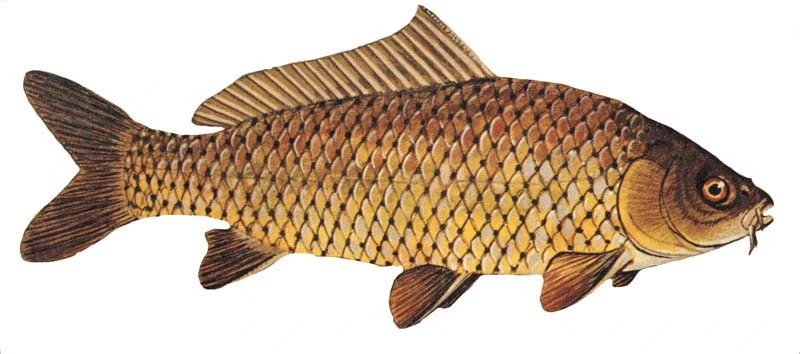
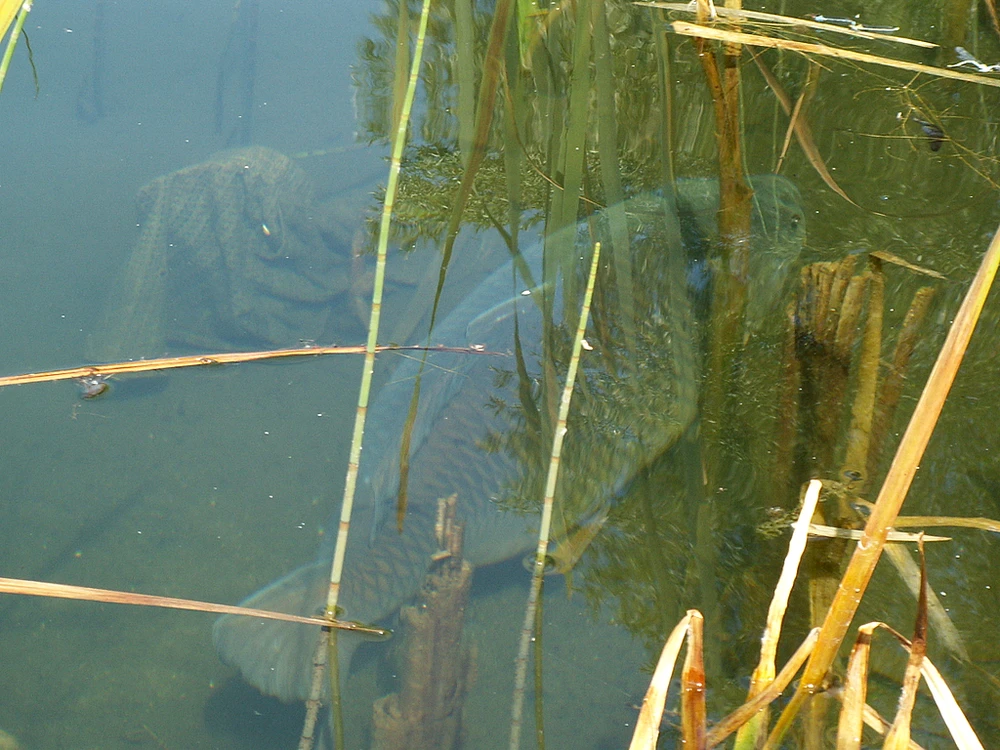
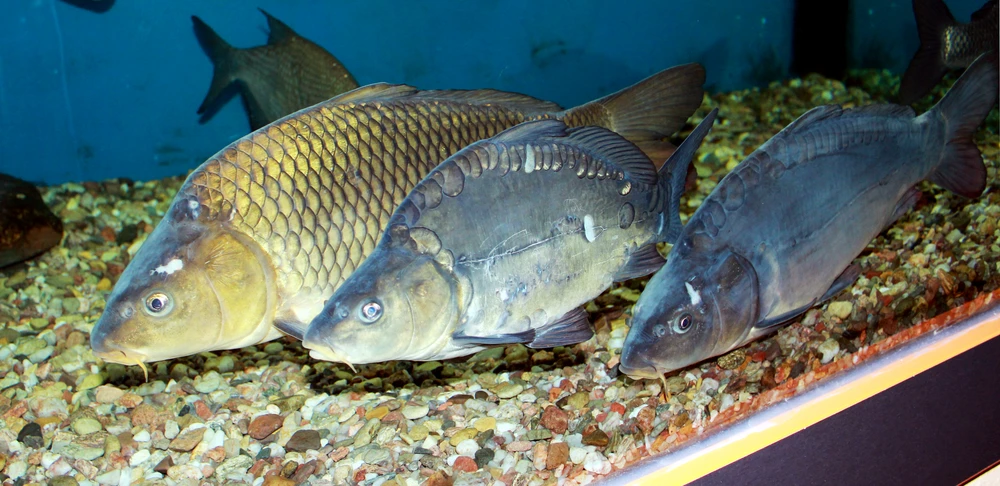
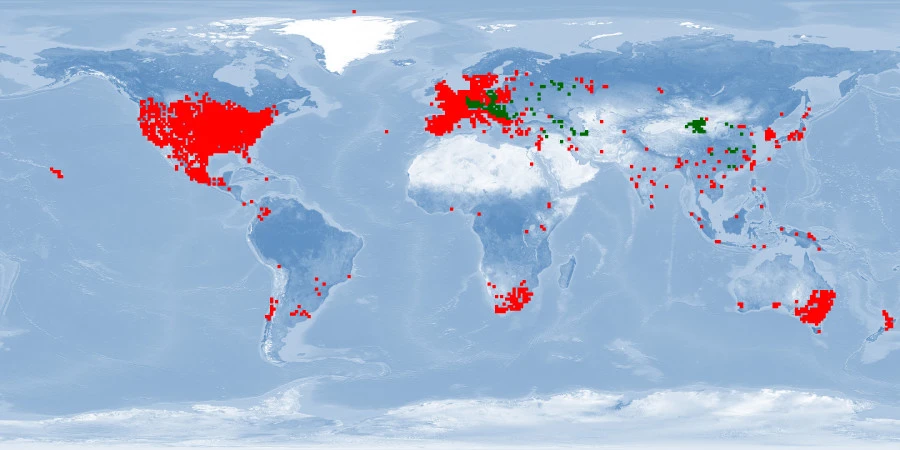




Probably, we updated the profile. Check the version number in the head of the page. For more information on the version, see the FAQ about this. Why do we update profiles? Not just do we want to include new research that has come out, but we are continuously developing the database itself. For example, we changed the structure of entries in criteria or we added explanations for scores in the WelfareCheck | farm. And we are always refining our scoring rules.
The centre of the Overview is an array of criteria covering basic features and behaviours of the species. Each of this information comes from our literature search on the species. If we researched a full Dossier on the species, probably all criteria in the Overview will be covered and thus filled. This was our way to go when we first set up the database.
Because Dossiers are time consuming to research, we switched to focusing on WelfareChecks. These are much shorter profiles covering just 10 criteria we deemed important when it comes to behaviour and welfare in aquaculture (and lately fisheries, too). Also, WelfareChecks contain the assessment of the welfare potential of a species which has become the main feature of the fair-fish database over time. Because WelfareChecks do not cover as many criteria as a Dossier, we don't have the information to fill all blanks in the Overview, as this information is "not investigated by us yet".
Our long-term goal is to go back to researching Dossiers for all species covered in the fair-fish database once we set up WelfareChecks for each of them. If you would like to support us financially with this, please get in touch at ffdb@fair-fish.net
See the question "What does "not investigated by us yet" mean?". In short, if we have not had a look in the literature - or in other words, if we have not investigated a criterion - we cannot know the data. If we have already checked the literature on a criterion and could not find anything, it is "no data found yet". You spotted a "no data found yet" where you know data exists? Get in touch with us at ffdb@fair-fish.net!
Once you have clicked on "show details", the entry for a criterion will unfold and display the summarised information we collected from the scientific literature – complete with the reference(s).
As reference style we chose "Springer Humanities (numeric, brackets)" which presents itself in the database as a number in a grey box. Mouse over the box to see the reference; click on it to jump to the bibliography at the bottom of the page. But what does "[x]-[y]" refer to?
This is the way we mark secondary citations. In this case, we read reference "y", but not reference "x", and cite "x" as mentioned in "y". We try to avoid citing secondary references as best as possible and instead read the original source ourselves. Sometimes we have to resort to citing secondarily, though, when the original source is: a) very old or not (digitally) available for other reasons, b) in a language no one in the team understands. Seldomly, it also happens that we are running out of time on a profile and cannot afford to read the original. As mentioned, though, we try to avoid it, as citing mistakes may always happen (and we don't want to copy the mistake) and as misunderstandings may occur by interpreting the secondarily cited information incorrectly.
If you spot a secondary reference and would like to send us the original work, please contact us at ffdb@fair-fish.net
In general, we aim at giving a good representation of the literature published on the respective species and read as much as we can. We do have a time budget on each profile, though. This is around 80-100 hours for a WelfareCheck and around 300 hours for a Dossier. It might thus be that we simply did not come around to reading the paper.
It is also possible, though, that we did have to make a decision between several papers on the same topic. If there are too many papers on one issue than we manage to read in time, we have to select a sample. On certain topics that currently attract a lot of attention, it might be beneficial to opt for the more recent papers; on other topics, especially in basic research on behaviour in the wild, the older papers might be the go-to source.
And speaking of time: the paper you are missing from the profile might have come out after the profile was published. For the publication date, please check the head of the profile at "cite this profile". We currently update profiles every 6-7 years.
If your paper slipped through the cracks and you would like us to consider it, please get in touch at ffdb@fair-fish.net
This number, for example "C | 2.1 (2022-11-02)", contains 4 parts:
- "C" marks the appearance – the design level – of the profile part. In WelfareChecks | farm, appearance "C" is our most recent one with consistent age class and label (WILD, FARM, LAB) structure across all criteria.
- "2." marks the number of major releases within this appearance. Here, it is major release 2. Major releases include e.g. changes of the WelfareScore. Even if we just add one paper – if it changes the score for one or several criteria, we will mark this as a major update for the profile. With a change to a new appearance, the major release will be re-set to 1.
- ".1" marks the number of minor updates within this appearance. Here, it is minor update 1. With minor updates, we mean changes in formatting, grammar, orthography. It can also mean adding new papers, but if these papers only confirm the score and don't change it, it will be "minor" in our book. With a change to a new appearance, the minor update will be re-set to 0.
- "(2022-11-02)" is the date of the last change – be it the initial release of the part, a minor, or a major update. The nature of the changes you may find out in the changelog next to the version number.
If an Advice, for example, has an initial release date and then just a minor update date due to link corrections, it means that – apart from correcting links – the Advice has not been updated in a major way since its initial release. Please take this into account when consulting any part of the database.
First up, you will find answers to questions for the specific page you are on. Scrolling down in the FAQ window, there are also answers to more general questions. Explore our website and the other sub pages and find there the answers to questions relevant for those pages.
In the fair-fish database, when you have chosen a species (either by searching in the search bar or in the species tree), the landing page is an Overview, introducing the most important information to know about the species that we have come across during our literatures search, including common names, images, distribution, habitat and growth characteristics, swimming aspects, reproduction, social behaviour but also handling details. To dive deeper, visit the Dossier where we collect all available ethological findings (and more) on the most important aspects during the life course, both biologically and concerning the habitat. In contrast to the Overview, we present the findings in more detail citing the scientific references.
Depending on whether the species is farmed or wild caught, you will be interested in different branches of the database.
Farm branch
Founded in 2013, the farm branch of the fair-fish database focuses on farmed aquatic species.
Catch branch
Founded in 2022, the catch branch of the fair-fish database focuses on wild-caught aquatic species.
The heart of the farm branch of the fair-fish database is the welfare assessment – or WelfareCheck | farm – resulting in the WelfareScore | farm for each species. The WelfareCheck | farm is a condensed assessment of the species' likelihood and potential for good welfare in aquaculture, based on welfare-related findings for 10 crucial criteria (home range, depth range, migration, reproduction, aggregation, aggression, substrate, stress, malformations, slaughter).
For those species with a Dossier, we conclude to-be-preferred farming conditions in the Advice | farm. They are not meant to be as detailed as a rearing manual but instead, challenge current farming standards and often take the form of what not to do.
In parallel to farm, the main element of the catch branch of the fair-fish database is the welfare assessment – or WelfareCheck | catch – with the WelfareScore | catch for each species caught with a specific catching method. The WelfareCheck | catch, too, is a condensed assessment of the species' likelihood and potential for good welfare – or better yet avoidance of decrease of good welfare – this time in fisheries. We base this on findings on welfare hazards in 10 steps along the catching process (prospection, setting, catching, emersion, release from gear, bycatch avoidance, sorting, discarding, storing, slaughter).
In contrast to the farm profiles, in the catch branch we assess the welfare separately for each method that the focus species is caught with. In the case of a species exclusively caught with one method, there will be one WelfareCheck, whereas in other species, there will be as many WelfareChecks as there are methods to catch the species with.
Summarising our findings of all WelfareChecks | catch for one species in Advice | catch, we conclude which catching method is the least welfare threatening for this species and which changes to the gear or the catching process will potentially result in improvements of welfare.
Welfare of aquatic species is at the heart of the fair-fish database. In our definition of welfare, we follow Broom (1986): “The welfare of an individual is its state as regards its attempts to cope with its environment.” Thus, welfare may be perceived as a continuum on which an individual rates “good” or “poor” or everything in between.
We pursue what could be called a combination of not only a) valuing the freedom from injuries and stress (function-based approach) but b) supporting attempts to provide rewarding experiences and cognitive challenges (feelings-based approach) as well as c) arguing for enclosures that mimic the wild habitat as best as possible and allow for natural behaviour (nature-based approach).
Try mousing over the element you are interested in - oftentimes you will find explanations this way. If not, there will be FAQ on many of the sub-pages with answers to questions that apply to the respective sub-page. If your question is not among those, contact us at ffdb@fair-fish.net.
It's right here! We decided to re-name it to fair-fish database for several reasons. The database has grown beyond dealing purely with ethology, more towards welfare in general – and so much more. Also, the partners fair-fish and FishEthoGroup decided to re-organise their partnership. While maintaining our friendship, we also desire for greater independence. So, the name "fair-fish database" establishes it as a fair-fish endeavour.
